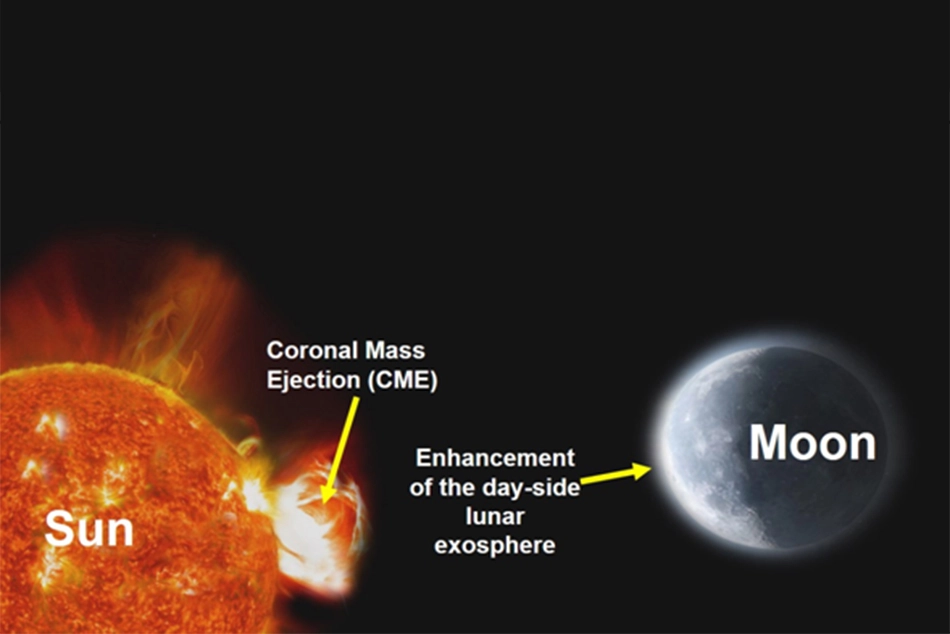
In a first, Chandrayaan-2 detects solar impact on Moon’s atmosphere
In a landmark development, India's Chandrayaan-2 has made the first ever observation of the effects of Coronal Mass Ejections (CMEs) from the Sun on the Moon’s exosphere

[Artistic rendition of the CME hurled by the Sun towards the Moon, and its effect on the day-side lunar exosphere (Image shared by ISRO for visualisation only, not up to the scale)]
In a landmark development, India's Chandrayaan-2 has made the first ever observation of the effects of Coronal Mass Ejections (CMEs) from the Sun on the Moon’s exosphere.
Chandrayaan-2, India's second lunar mission, was launched on July 22, 2019 carrying eight experiment payloads. On August 20, 2019, Chandrayaan-2 was successfully inserted into the elliptical orbit around the Moon, but its rover, Vikram, crashed as it attempted a soft landing on the moon. It, however, did not completely fail, as its orbiter successfully reached lunar orbit and is still functional.
Coronal Mass Ejections
A series of CMEs impacted the Moon during a rare solar event on May 10, 2024. The ejections led to a significant increase in the total pressure of the dayside lunar exosphere — the extremely thin atmosphere surrounding the Moon.
Chandrayaan-2 detected the solar impact on Moon’s atmosphere with one of its scientific instruments Chandra’s Atmospheric Composition Explorer-2 (CHACE-2) onboard.
"Observations from CHACE-2 showed an increase in the total pressure of the dayside lunar exosphere (very thin atmosphere) when the CME impacted the Moon", ISRO said in a statement.
"The total number density derived from these observations showed an increase by more than an order of magnitude", the Indian space agency said.
Number density is number of neutral atoms or molecules present in an environment per unit volume.
"This increase is consistent with earlier theoretical models, which predicted such an effect, but CHACE-2 onboard Chandrayaan-2 has observed such an effect for the first time", ISRO said.
This observation would provide scientific insight in the understanding of the lunar exosphere and space weather effects on the Moon.
"Apart from pushing the edge of our scientific understanding about the Moon and the lunar space weather (effect of the Sun’s emissions on the Moon), this observation also indicates the challenges of building scientific bases on the Moon. Lunar base architects need to account for such extreme events, which would temporarily alter the lunar environment, before the effects subside", ISRO said.
Follow ummid.com WhatsApp Channel for all the latest updates.
Select Language to Translate in Urdu, Hindi, Marathi or Arabic







